Langley Fox Hemingway can safely describe herself as an artist-slash-model-slash-designer-slash-illustrator without earning any eye rolls. The LA-based artist draws for her own personal projects as well as commissions for fashion houses and department stores that have evolved into modeling gigs and capsule collections. The latest of the latter is with Sportmax, rounding out the sixth edition of its ongoing “Carte Blanche” line. For this collection limited to just a thousand numbered pieces (and hitting stores this fall), Hemingway designed three T-shirts, dresses, and sweatshirts that boast both her illustrations and unique style. We recently caught up with Hemingway to learn more about her foray into fashion and her love of Tim Burton (her cat is named Jack Skellington).
WHITEWALL: Can you tell us about the process of designing this capsule collection for Sportmax?
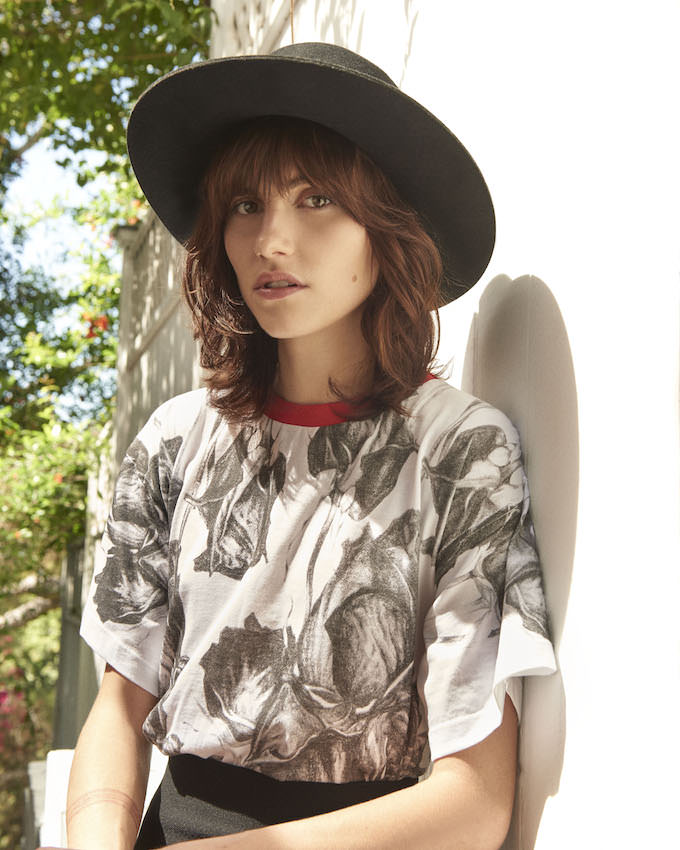
Courtesy of Sportmax
LANGLEY FOX HEMINGWAY: It was very much a process of putting together art and print and putting it on shapes and adding colors.
WW: Was the choice of three T-shirts, three dresses, and three sweatshirts based on items that you wear a lot?
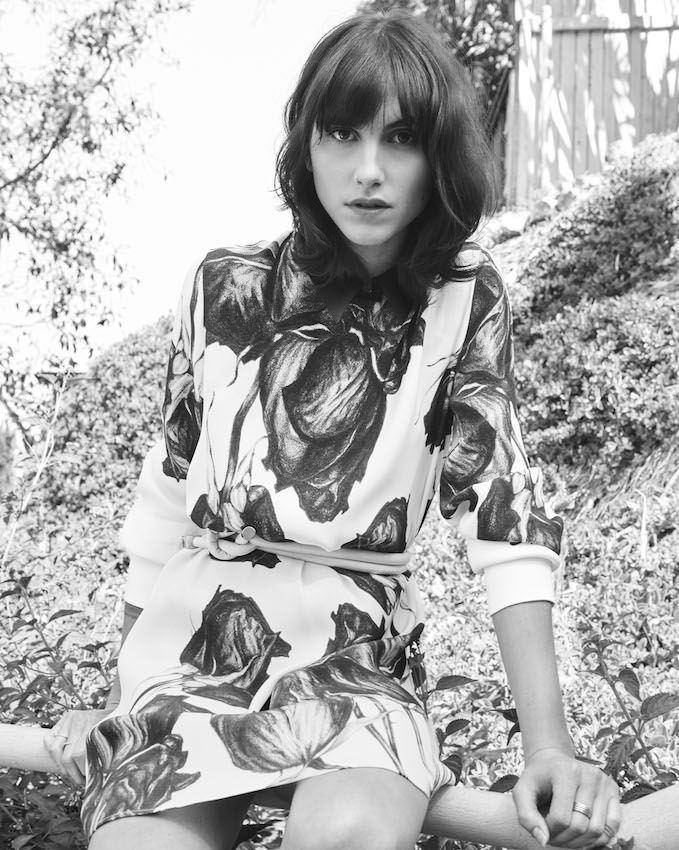
Courtesy of Sportmax
LFH: I think those shapes are pretty basic for many people. I especially think even the sweatshirt and T-shirt can be dressed up or dressed down and can be day or more night. They are pretty easy shapes to wear to anything. I went to school for fashion design, so fashion has always been a love of mine. I think mainly about creating something that’s wearable to not just one specific person, but many.
WW: Is that why you wanted to use more general motifs like feathers, flowers, et cetera, versus something more figurative like you see in a lot of your illustrations?
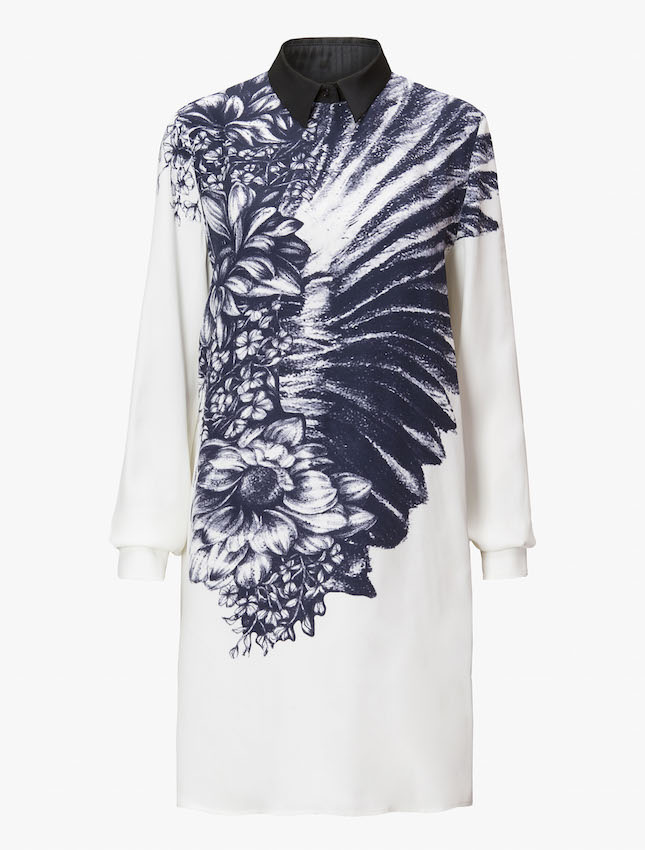
Courtesy of Sportmax
LFH: I love drawing portraits, but I don’t want to put a specific person’s face on another one’s body.
WW: Some pieces have bright colors added on the collar and cuff.
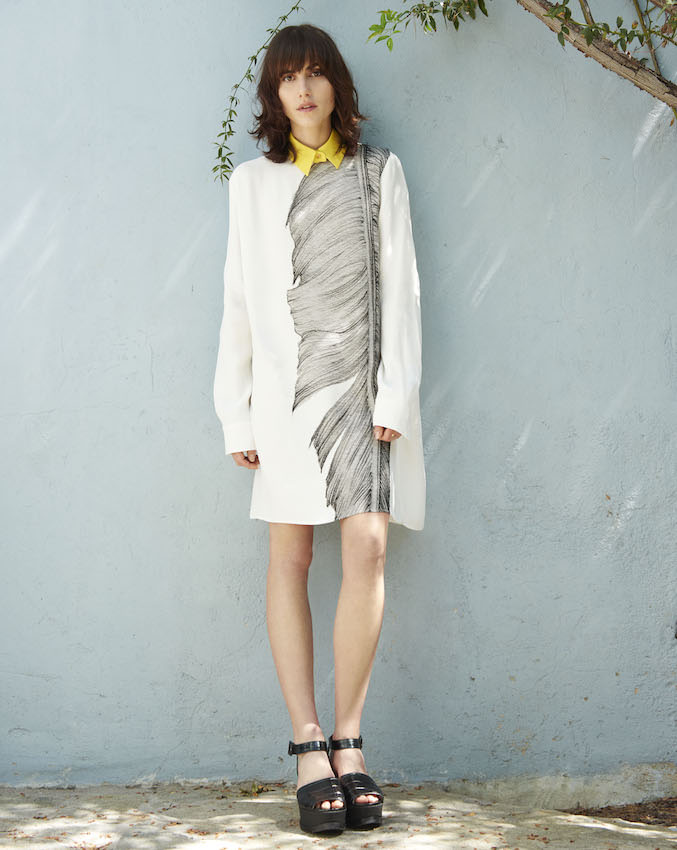
Courtesy of Sportmax
LFH: I think it’s fun to always put a pop of color in. I do that even with my illustrations. I’ll put a hint of watercolor. I think it sort of draws your eye into something else—it brightens the black-and-white element of it. I think playing with color on a grayscale is fun if it makes sense.
WW: As you mentioned, you went to fashion school, but you seem to define yourself more as an artist. And yet you’ve also started to do a few modeling projects lately. How did those come about?
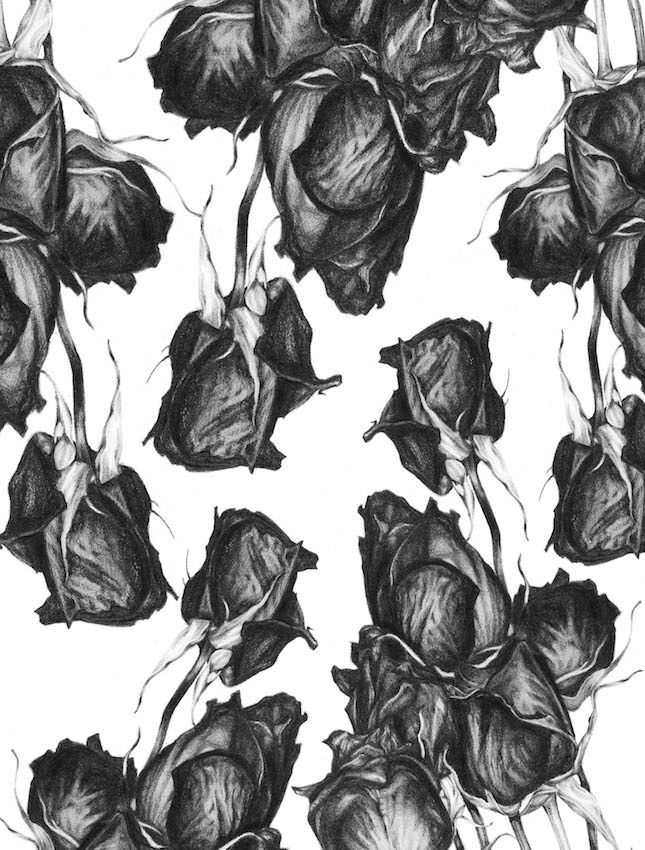
Courtesy of the artist
LFH: I’ve always been passionate about being an artist, since I was a small little one. I actually never thought I would be a model. It was never my thing. I was terrified of taking pictures. And then people started to reach out and I started to open my eyes to more opportunities, and I think life is about putting yourself in positions that are not your favorite. It’s a basis for making a new kind of collaboration and meeting a lot of cool people and adding another element to whatever this is. So there was never really a choice. I mean, art is my first and foremost. I love it.
WW: Do you see your artistic work as separate from collaborations or modeling?
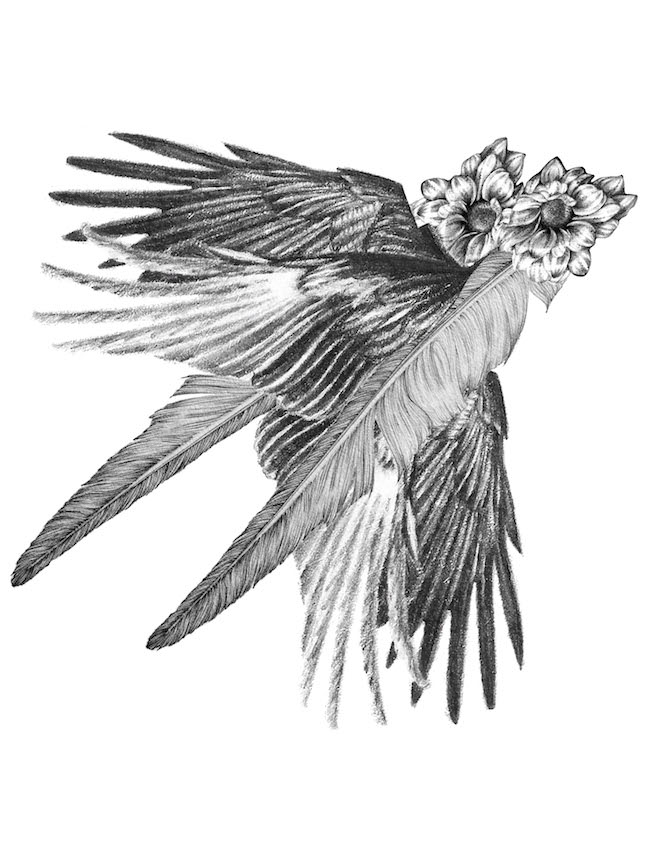
Courtesy of the artist
LFH: Oh, no—they work together, totally. They are the weirdest two combinations that have somehow become one, because usually I think people hire me as a model because I am an artist. Most of the time it’s like, “Involve your personal style.” I think it just works together that way.
WW: You’ve also talked about how you see illustration coming back more and more into fashion.
LFH: Oh, yeah. I think it popped up when Photoshop and Illustrator became overly accessible. Drawing is seen as a less accessible talent—a lot of people can do it, but it’s a different quality of work. Drawing is such a skill, but it’s kind of like playing the piano. It’s a skill, but if you took lessons for two years you’d probably get pretty decent at it, you know?
WW: Do you separate personal projects from commissions, or do you see them as part of a bigger whole?
LFH: I do so many commissions that I try to make them as happy as a personal project because I don’t always have time for a personal project, but when I do it for me there’s a little more element of a fantasy to it. But I don’t get to do that as often as I should and want to.
WW: When it’s your own personal project, are there specific materials you like to use? I know you mentioned a little watercolor, pencil . . .
LFH: I’m very comfortable in graphite, so I like using that, and I think I produce some of my best work that way because I can get it so specific and realistic and that’s what makes me happy and excited. So, generally, graphite, sometimes some paint. I’d like to explore some charcoal and oil paints eventually, but, you know, we’ll get there.
WW: You’ve named Edward Gorey and Tim Burton as influential. Can you tell us more about that?
LFH: I remember when I was a kid seeing Tim Burton’s movies like Nightmare Before Christmas and Edward Scissorhands and Beetlejuice. They’re so weird, but they’re fantasies and innocent and creepy but not in an evil way. I just remember always wanting to be a Tim Burton character. And when I was in school someone introduced me to Edward Gorey’s work knowing that I liked Tim Burton. I like the way their minds work. I like when somebody has an explorative mind, the element of fantasy where you can imagine it and then you can create it and make it and then you put it out there and it’s real.
WW: Do you have a time period coming up where you’ll have time to work on something just for you?
LFH: I think unless something amazing comes in after I do these little things, maybe. I’m the worst person because I just say yes to everybody. I need to do something for me.
This article is published in Whitewall‘s fall 2015 Fashion Issue out this month.








